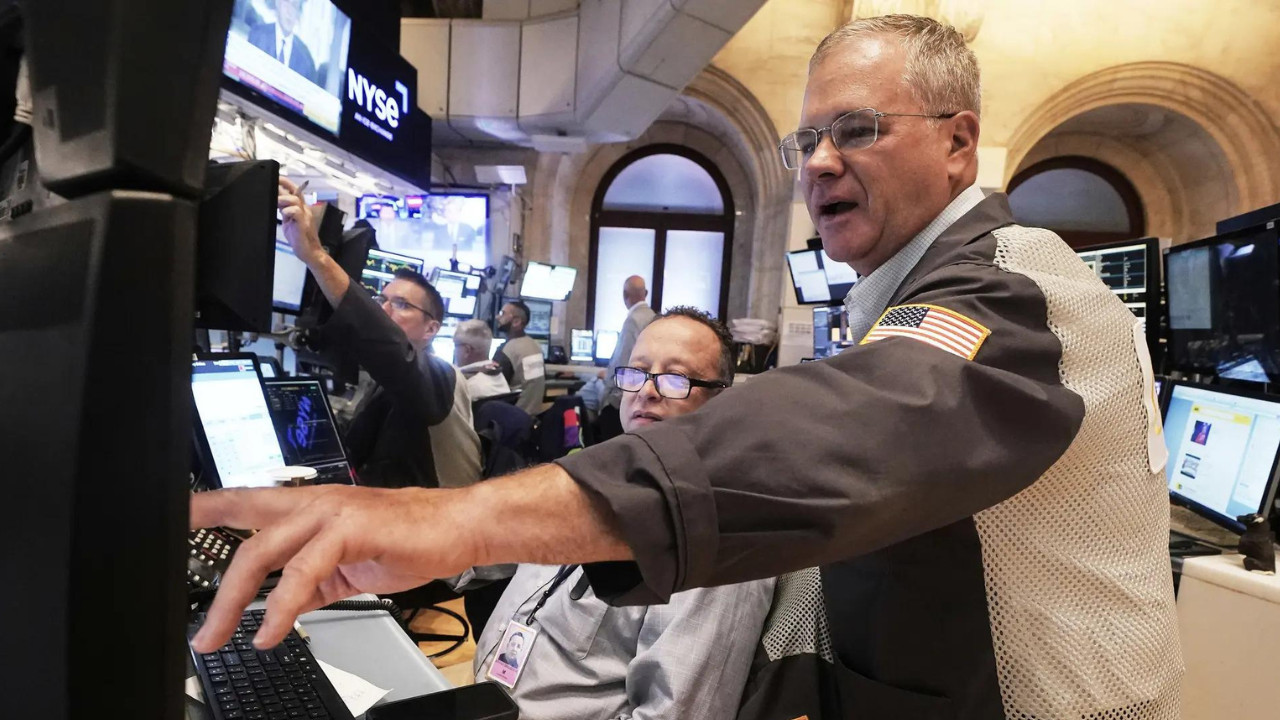Wall Street experienced a slight rise, poised for its best week in five, fueled by anticipation of a Federal Reserve interest rate cut. Investor sentiment is optimistic, driven by hopes that the Fed will ease rates to support growth. Mixed global market performance and rising Treasury yields reflect investor considerations of upcoming Fed actions.
Wall Street’s Wild Ride: Navigating the Shifting Sands of Rate Cut Expectations
Wall Street’s been a rollercoaster lately, hasn’t it? One minute, everyone’s buzzing about imminent rate cuts, the next, reality bites and the market recalibrates. The last few trading sessions have perfectly encapsulated this whipsaw effect, leaving investors both exhilarated and, let’s be honest, a little seasick.
The big story continues to be the Federal Reserve and its dance with interest rates. For months, the narrative was simple: inflation is cooling, the Fed will pivot, and rate cuts are on the horizon. This fueled a significant rally, particularly in tech stocks, as investors anticipated lower borrowing costs and a boost to economic growth. However, recent economic data has thrown a wrench into those well-laid plans.
Inflation, while down from its peak, hasn’t fallen as rapidly as many hoped. Plus, the labor market remains surprisingly resilient. This combination of factors has led some Fed officials to adopt a more cautious tone, suggesting that rate cuts might be delayed, or even smaller, than initially anticipated. This shift in sentiment has sent ripples through the market.
We saw this play out in real-time as the major indices experienced some pretty significant swings. The Nasdaq, heavily weighted with those rate-sensitive tech stocks, has been particularly volatile. When rate cut hopes are high, it soars; when doubts creep in, it stumbles. The Dow Jones Industrial Average, with its more diversified base, has shown a bit more resilience, but even it hasn’t been immune to the uncertainty. The S&P 500, often viewed as the broadest measure of the US stock market, reflects the overall tension between optimism and caution.

Why the Market Hangs on Every Word: The Power of Fed Rate Cut Expectations
It’s not just about the numbers; it’s about the psychology. The stock market is a forward-looking beast, constantly trying to anticipate what’s coming down the pike. Lower interest rates generally translate to lower borrowing costs for companies, increased investment, and higher consumer spending. That’s why even the expectation of rate cuts can drive stock prices higher. Conversely, the fear of higher-for-longer rates can send shivers down investors’ spines.
What’s been particularly interesting is how quickly the market has reacted to even slight shifts in the Fed’s rhetoric. A single comment from a Fed official suggesting a more hawkish stance can trigger a sell-off, while a hint of dovishness can spark a rally. This heightened sensitivity highlights the degree to which the market is currently focused on the Fed’s every move.
Beyond the Fed: Other Factors at Play
While the Fed dominates the headlines, it’s important to remember that other factors are also influencing market performance. Corporate earnings, for example, play a crucial role. Strong earnings reports can provide a boost to individual stocks and the overall market, even in the face of rate-related uncertainty. Conversely, disappointing results can amplify negative sentiment.
Geopolitical events, such as ongoing conflicts and trade tensions, also add to the mix. These events can create uncertainty and volatility, making it even more challenging for investors to navigate the market. We also can’t ignore that it’s an election year, which always adds another layer of complexity to the economic outlook.
Navigating the Uncertainty: A Balanced Approach
So, what’s an investor to do in this environment? It’s more important than ever to maintain a long-term perspective and avoid making rash decisions based on short-term market fluctuations. A well-diversified portfolio, spread across different asset classes, can help mitigate risk. [Consider reviewing our guide to building a robust investment strategy.](internal-link-to-related-article)
Trying to time the market is generally a losing game. Instead, focus on investing in quality companies with solid fundamentals, and be prepared to ride out the inevitable ups and downs. Pay attention to the economic data, but don’t get too caught up in the daily noise.
The current market environment is undoubtedly challenging, but it also presents opportunities. By staying informed, remaining disciplined, and maintaining a long-term focus, investors can navigate the shifting sands and position themselves for future success. Ultimately, understanding the nuances of Fed rate cut expectations and their potential impact is key to making informed investment decisions.







